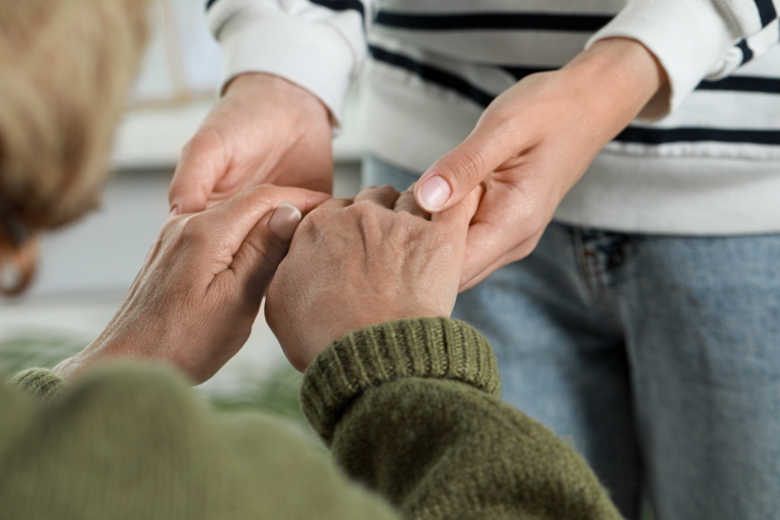As caregivers for elderly loved ones, ensuring their safety and well-being within the home is paramount. Creating a safe environment not only prevents accidents but also fosters a sense of security and independence for seniors. In this guide, we’ll explore essential home safety tips tailored specifically for elderly caregivers. From simple adjustments to more significant modifications, these strategies will help you transform your home into a secure haven for your loved ones.
1. Assessing Home Hazards:
- Begin by conducting a thorough assessment of your home, identifying potential hazards such as loose rugs, slippery surfaces, and cluttered pathways.
- Pay close attention to areas where seniors spend the most time, such as the bedroom, bathroom, and kitchen, and prioritize safety measures accordingly.
2. Improving Lighting:
- Adequate lighting is crucial for seniors, especially those with vision impairments. Install bright, energy-efficient lighting fixtures in all rooms, including hallways and staircases.
- Consider adding motion-sensor lights in key areas to provide illumination when needed, particularly during nighttime trips to the bathroom or kitchen.
3. Ensuring Bathroom Safety:
- The bathroom can be a high-risk area for seniors due to slippery surfaces and limited mobility. Install grab bars near the toilet, shower, and bathtub to provide support when standing or sitting.
- Use non-slip mats or adhesive strips in the shower or bathtub to prevent falls, and consider installing a shower chair or bench for added stability during bathing.
4. Securing the Bedroom:
- Create a safe and comfortable sleeping environment by choosing a mattress and bedding that provide adequate support.
- Install bedside rails or grab bars to assist with getting in and out of bed, and remove clutter and tripping hazards from the bedroom floor.
5. Kitchen Safety Measures:
- Make the kitchen more accessible and user-friendly for seniors by organizing frequently used items within easy reach.
- Install grab bars near the stove and sink to assist with balance while cooking or washing dishes, and ensure that appliances are in good working condition with easy-to-read controls.
6. Fall Prevention Strategies:
- Implement fall prevention strategies throughout the home by securing loose rugs, removing clutter, and installing handrails along staircases.
- Consider using assistive devices such as walkers or canes to provide additional support and stability for seniors with mobility issues.
7. Fire Safety Precautions:
- Educate seniors about fire safety practices, such as never leaving cooking unattended and keeping flammable items away from heat sources.
- Install smoke alarms in every bedroom and on every level of the home, and test them regularly to ensure they are functioning properly.
8. Medication Management:
- Establish a system for organizing and managing medications to prevent errors or missed doses. Use pill organizers or medication reminders to help seniors stay on track with their medication regimen.
- Keep emergency contact information for healthcare providers readily available in case of adverse reactions or emergencies.
9. Emergency Preparedness Planning:
- Develop a comprehensive emergency plan that includes procedures for evacuating the home in the event of a fire or natural disaster.
- Ensure that seniors have easy access to emergency supplies such as flashlights, batteries, and non-perishable food items.
10. Seeking Professional Assistance:
- If making home modifications or addressing safety concerns becomes overwhelming, consider enlisting the help of professional contractors, occupational therapists, or home safety specialists.
- These professionals can provide expert guidance and assistance in creating a safer living environment tailored to the specific needs of seniors.
11. Regular Maintenance Checks:
- Schedule regular maintenance checks for essential home systems such as heating, cooling, and plumbing to identify and address potential safety hazards.
- Inspect electrical outlets, cords, and appliances for signs of wear or damage, and repair or replace them as needed to prevent electrical fires or accidents.
- Keep outdoor walkways and pathways clear of debris and well-lit to prevent trips and falls, especially during inclement weather.
12. Engage in Home Safety Education:
- Provide ongoing education and training to seniors and caregivers about home safety practices and potential hazards to watch out for.
- Encourage open communication about any concerns or challenges related to home safety, and work together to find practical solutions that address individual needs.
- Stay informed about advancements in home safety technology and consider implementing new devices or systems to enhance overall safety and security.
13. Foster a Supportive Environment:
- Create a supportive environment where seniors feel comfortable expressing their needs and concerns about home safety.
- Encourage open dialogue and collaboration among family members, caregivers, and healthcare professionals to address safety issues and implement effective solutions.
- Foster a sense of empowerment and autonomy for seniors by involving them in decision-making processes related to home safety modifications and adaptations.
14. Regularly Reevaluate Safety Measures:
- Regularly reassess the effectiveness of safety measures and make adjustments as needed to address changing needs or circumstances.
- Stay vigilant for new hazards or risks that may arise over time, such as changes in mobility or health status, and proactively address them to maintain a safe living environment.
- Encourage ongoing communication and feedback from seniors and caregivers to ensure that safety concerns are promptly identified and addressed.
Conclusion:
Creating a safe and secure environment for elderly loved ones requires a proactive and multidimensional approach that encompasses various aspects of home safety. By implementing the essential tips outlined in this guide and remaining vigilant in identifying and addressing potential hazards, caregivers can create a nurturing and supportive environment where seniors can thrive with confidence and peace of mind. Remember, safety is a collaborative effort that requires ongoing communication, education, and adaptation to meet the evolving needs of seniors. By prioritizing safety and making necessary modifications, caregivers can create a safe haven where seniors can age in place with dignity and independence.




